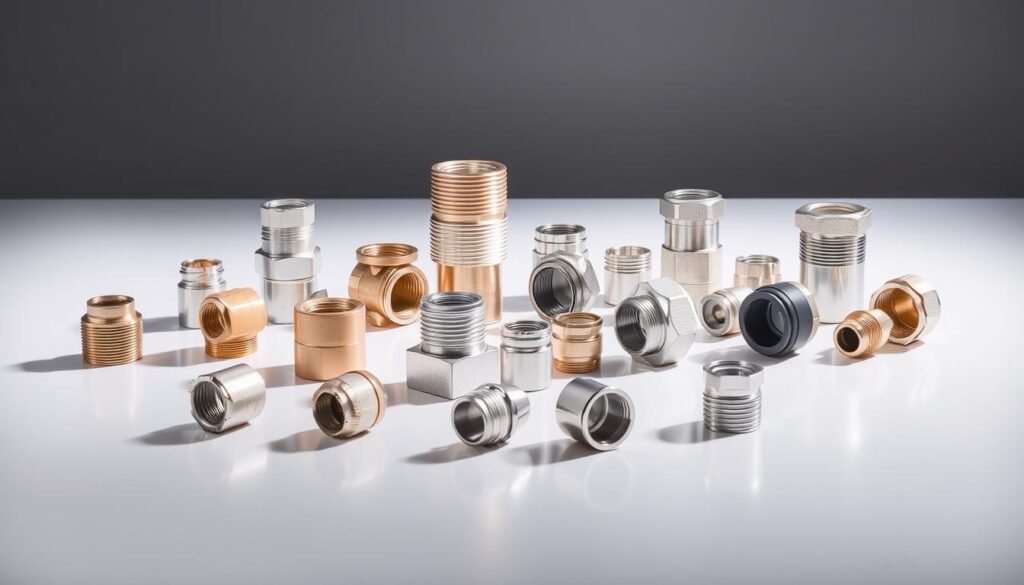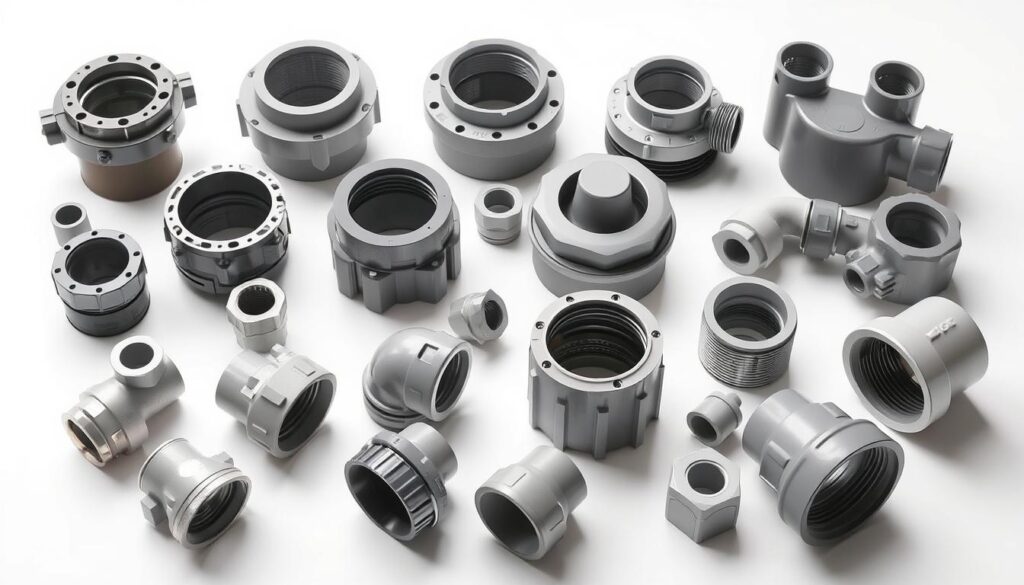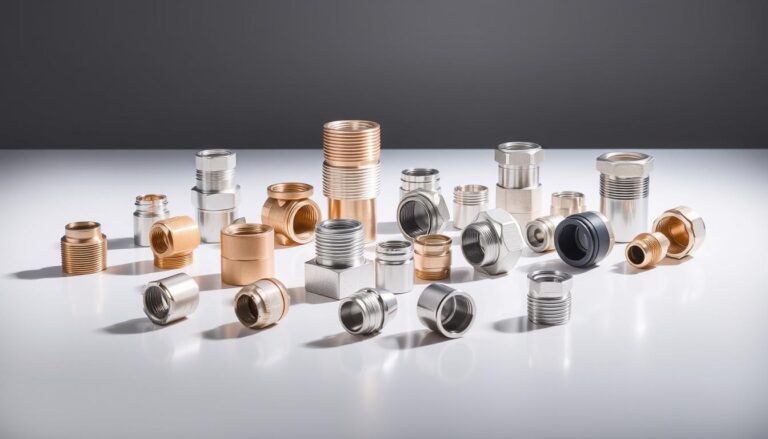Bulkhead fittings are key in plumbing systems. They ensure a secure connection between pipes and tanks. This is crucial for the system’s integrity.
Bulkhead fittings are vital for a secure plumbing system. They offer top-quality components for a reliable system. This makes them essential for secure plumbing.
Exploring bulkhead fittings helps us see their importance in plumbing. They play a big role in keeping plumbing systems secure.

Understanding Bulkhead Fittings and Their Essential Role in Plumbing
It’s key in plumbing systems. They connect pipes and tanks securely. They can handle different water pressures and temperatures.
There are many types of it You can find metal and plastic ones. Metal ones are strong, while plastic ones are flexible and affordable.

Choosing the right bulkhead fittings is crucial. You need to think about water pressure, temperature, and the type of pipes and tanks. The right fittings prevent leaks and ensure a safe plumbing system.
Importance of Bulkhead Fittings in Plumbing Systems
It’s vital in plumbing. They keep pipes and tanks connected, preventing leaks. Knowing about different fittings helps you have a reliable plumbing system.
Types of Bulkhead Fittings and Their Applications
it key in plumbing systems. They ensure pipes and tubes are securely connected. There are many types, each with its own benefits. Choosing the right one is crucial for secure plumbing.
It come in materials like metal and plastic. Metal ones are strong and durable, great for industrial use. Plastic ones are versatile and cost-effective, best for homes and small businesses.
Metal Bulkhead Fittings: Durability and Strength
Metal it can handle high pressures and temperatures. They’re also resistant to corrosion, perfect for tough environments.
Plastic Bulkhead Fittings: Versatility and Cost-Effectiveness
Plastic it light and easy to install. They resist corrosion and work well in various settings, like water treatment.
When picking it think about material, size, and pressure rating. The right choice ensures your plumbing is secure and leak-free.
| Bulkhead Fitting Type | Material | Application |
|---|---|---|
| Metal Bulkhead Fittings | Stainless Steel, Brass | Industrial, Commercial |
| Plastic Bulkhead Fittings | PVC, CPVC | Residential, Light-Commercial |
Conclusion: Making the Right Choice for Your Plumbing System
it key in any plumbing system. They ensure a secure connection between pipes and tanks. Knowing the different types and their uses helps you choose the best for your plumbing needs.
This article has covered metal and plastic it showed their benefits and how to install them. This knowledge helps you pick the right bulkhead fittings for a lasting plumbing system.
Improving your plumbing system means using top-notch it article has given you the tools to pick the best. Now, you can ensure your plumbing system works well and lasts long.
FAQ
What are bulkhead fittings and how do they work?
it key parts of plumbing systems. They connect pipes and tanks securely. They handle water pressure and temperature well, keeping the system strong.
What are the different types of it?
There are two main types: metal and plastic. Metal ones are strong and durable. Plastic ones are flexible and affordable. There are also special ones for certain needs.
How do I choose the right bulkhead fittings for my plumbing system?
Think about your system’s needs, like water pressure and temperature. Also, check the materials of your pipes. Always follow the installation guide for the best results.
What are the benefits of using bulkhead fittings in plumbing systems?
it vital for a safe plumbing system. They ensure a tight connection, preventing leaks. Using quality fittings helps avoid plumbing problems and keeps your system working well for longer.
How do I properly install it?
Installing them right is key for their performance. Always follow the manufacturer’s guide. Make sure they’re tight and sealed. Use the right tools to avoid damage.
